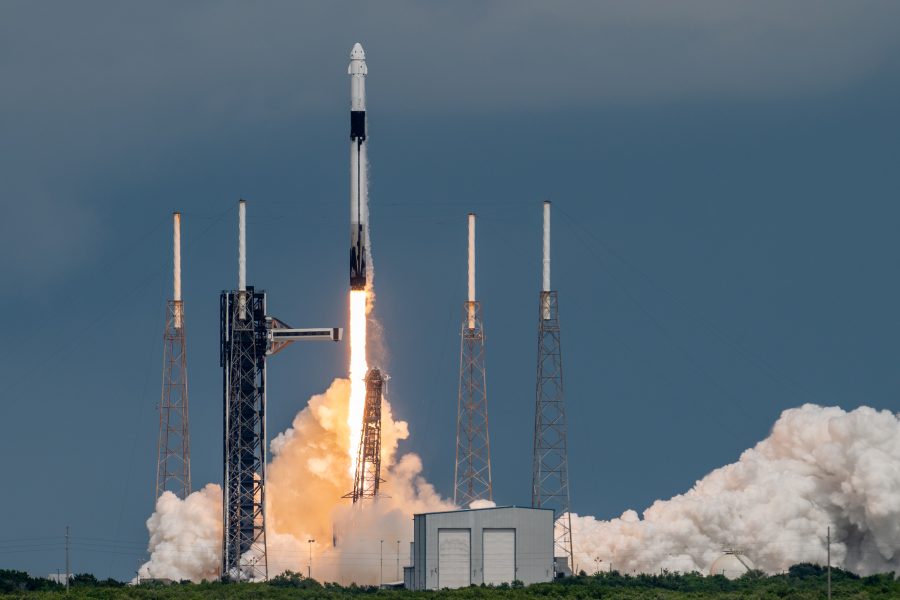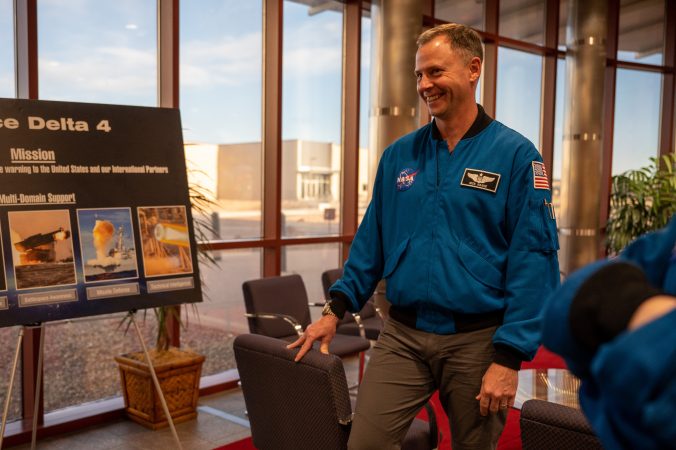
First Guardian Launches into Space Aboard NASA Mission (Image Credit: airandspaceforces)
For the first time in the Space Force’s young history, an Active-Duty Guardian launched into orbit this weekend, where he will take on a NASA mission at the International Space Station.
Space Force Col. Nick Hague commanded NASA’s Crew-9 mission, which launched Sept. 28 atop a SpaceX’s Falcon 9 rocket from Space Launch Complex 40 at Cape Canaveral Space Force Station, Fla.
Hague was accompanied by crewmate Aleksandr Gorbunov, a cosmonaut from the Russian space agency Roscosmos. Originally, Crew-9 was set to have four members, but two seats were left vacant to return home a pair of astronauts on the ISS whose Boeing Starliner spacecraft made an unmanned return to Earth due to safety concerns.
“Alex and I had a smooth ride up here,” said Hague upon arrival at the ISS. “I know it’s going to be an amazing expedition, I’m really looking forward to getting to work up here.”
Hague and Gorbunov joined five other crew members at the space station for NASA’s mission ‘Expedition 72,’ both serving as flight engineers for five months. The mission includes conducting experiments on various topics, such as life support systems and genetic analysis.
“I feel privileged to have the opportunity to cast a broader spotlight on everything that Guardians do to make human space flight possible,” Hague said in a release.

Guardians don’t typically operate in space, but the Space Force does plays a crucial role in supporting spaceflight through GPS satellite operations, space domain awareness, and launch operations.
“If the Space Force and its Guardians and U.S. Space Command are not doing their jobs, we don’t explore space,” said Hague. “The average person might not understand that human space flight doesn’t exist if Guardians aren’t doing what they do on a day-to-day basis, whether it’s launching us into space and the range support that we get there or it’s tracking or navigation.”
One key study Hague is exploring revolves around Spaceflight Associated Neuro-ocular Syndrome (SANS), a condition that clouds astronauts’ vision while they’re floating in space. This condition arises from the very low gravity environment experienced in orbit. Hague will participate in two studies led by NASA scientists to better understand and address SANS.
- Thigh Cuff Study: Hague will wear fitted thigh cuffs for six hours in two sessions to see if they help keep fluids in the legs and reduce head swelling. He’ll use ultrasounds to monitor blood flow and compare the results to data collected without the cuffs.
- Vitamin B Supplement Study: In this study, the Guardian will test whether daily vitamin B supplements can reduce eye swelling related to SANS and explore how genetics may influence individual responses.
“Hague’s experiences and research may potentially lead to scientific breakthroughs that may not be possible on Earth,” said Steven Platts, chief scientist for human research at NASA’s Johnson Space Center in Houston.
Additionally, the Guardian will collect data on motion sickness during launch and landing and participate in other studies to help NASA tackle various challenges, including preventing injuries during re-entry.
A 1999 graduate of the Air Force Academy, Hague has a bachelor’s degree in astronautical engineering and later earned a master’s degree in aeronautical and astronomical engineering from MIT. He then attended the Air Force Test Pilot School at Edwards Air Force Base, Calif. Upon graduating in 2004, he joined the 416th Flight Test Squadron, putting F-16, F-15, and T-38 aircraft through their paces. He was finally able to join NASA in 2013 to begin astronaut candidate training.
“I applied three times to become an astronaut, I got rejected twice,” said Hague. “It took me 10 years.”
This marks Hague’s third launch and second mission at the space station, albeit his first as a member of the Space Force. His first attempt to reach orbit in 2018 ended abruptly when a rocket booster malfunctioned, but the spacecraft made a safe landing. The following year, he successfully reached the ISS, where he served as a flight engineer for more than six months during NASA’s Expeditions 59 and 60 missions.
After returning home from the NASA’s mission in 2019, Hague served as the director of test and evaluation for the Space Force at the Pentagon. He officially transferred to become a Guardian in 2021.
“NASA and the Space Force have very different functions, but we share a common interest in the free and responsible use of the space domain,” said Secretary of the Air Force Frank Kendall. “We also share an understanding of the importance of integrating with our allies and partners, joining Guardian values to civil space objectives for the collective good.”
Hague is not the first Guardian in space; Col. Michael Hopkins took that honor when he transferred into the Space Force in 2020 while aboard the International Space Station.





